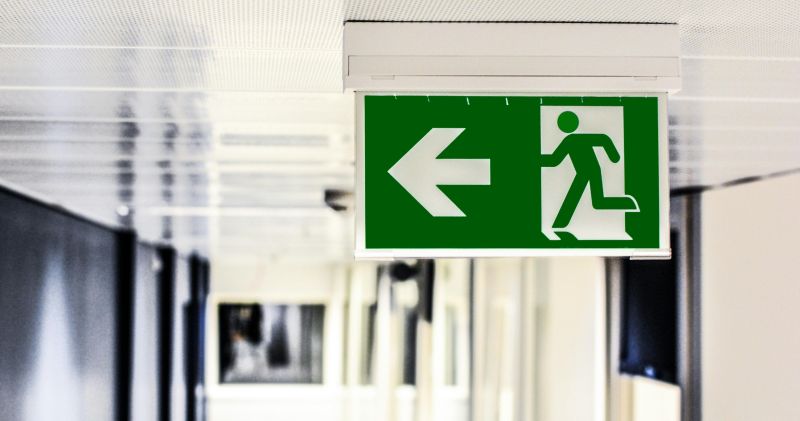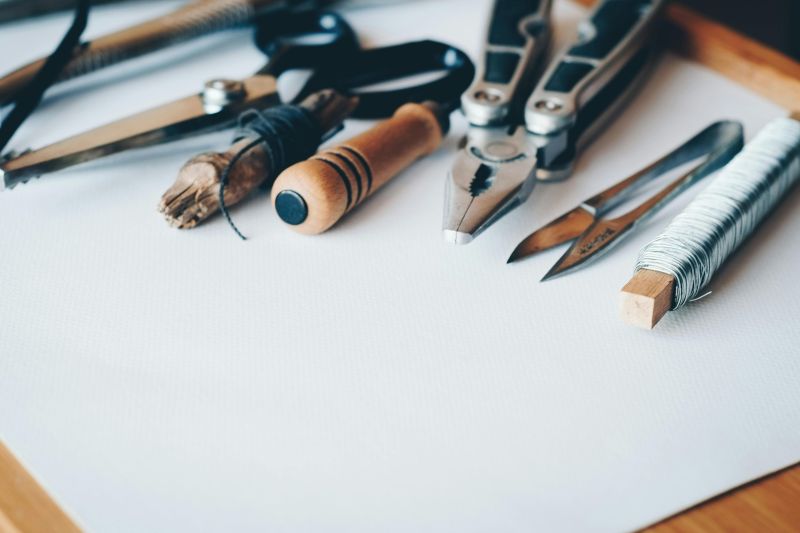When disaster strikes, whether through water or fire damage, the importance of hiring certified restoration experts cannot be overstated. These professionals bring specialized knowledge and equipment to effectively restore your property, ensuring a thorough and efficient recovery process. At COMMITTED TO QUALITY SERVICE, we understand that dealing with the aftermath of such incidents can be overwhelming. That’s why our team is dedicated to providing fast, friendly, and professional service to help you navigate these challenging times. With our expertise in water damage restoration, we utilize advanced techniques and tools designed specifically for drying structures, minimizing further damage and expediting the restoration process. Additionally, our fire damage restoration services focus on quickly mitigating affected areas to recover your property safely and efficiently. By choosing certified restoration experts, you not only ensure a higher quality of service but also gain peace of mind knowing that your home or business is in capable hands. Call us now at 855-933-7935 to learn more about how we can assist you in restoring your property to its former glory.
Understanding the Role of Certified Restoration Experts
Certified restoration experts play a crucial role in the recovery process following disasters such as floods, fires, or mold infestations. Their expertise not only ensures that properties are restored to their pre-damage condition but also safeguards the health and safety of the occupants. Understanding their role can help homeowners and business owners appreciate the value of hiring professionals for restoration services.
One of the primary responsibilities of certified restoration experts is to assess the extent of the damage. They utilize advanced techniques and equipment to evaluate the situation accurately. This initial assessment is vital as it informs the restoration plan and helps in determining the necessary steps to mitigate further damage. For instance, in cases of water damage, experts will identify the source of the water intrusion and evaluate the affected areas, including hidden spaces that may not be immediately visible. This thorough evaluation is essential for effective water damage restoration.
Once the assessment is complete, certified restoration experts develop a comprehensive restoration plan tailored to the specific needs of the property. This plan typically includes steps for removing damaged materials, cleaning and sanitizing affected areas, and restoring the property to its original state. Their training equips them with the knowledge of the best practices and techniques to ensure that the restoration process is efficient and effective. For example, in fire damage situations, experts will not only focus on structural repairs but also on smoke and soot removal, which can be detrimental to indoor air quality if not addressed properly.
Another critical aspect of their role is compliance with industry standards and regulations. Certified restoration experts are trained to adhere to guidelines set forth by organizations such as the Institute of Inspection, Cleaning and Restoration Certification (IICRC). This adherence ensures that the restoration work meets safety and quality standards, providing peace of mind to property owners. As noted by the IICRC, "Restoration is a science, and it requires trained professionals to ensure that the work is done correctly."
Moreover, certified restoration experts are equipped with specialized tools and technology that enhance the restoration process. For instance, they use moisture meters, thermal imaging cameras, and air scrubbers to detect hidden moisture and improve air quality. These tools allow them to address issues that may not be visible to the naked eye, ensuring a thorough restoration. Their expertise in using these tools effectively can significantly reduce the risk of future problems, such as mold growth, which can occur if moisture is not adequately managed.
In addition to their technical skills, certified restoration experts also provide valuable support and guidance throughout the restoration process. They can assist property owners in navigating insurance claims, helping to document the damage and provide necessary information to expedite the claims process. This support can alleviate some of the stress associated with recovery after a disaster, allowing property owners to focus on rebuilding their lives.
Furthermore, hiring certified restoration experts can lead to long-term cost savings. While some may consider DIY restoration to save money, the potential for mistakes can lead to more significant issues down the line, resulting in higher repair costs. According to a study by the National Institute of Standards and Technology, improper restoration can lead to an increase in mold growth, which can be costly to remediate. By investing in certified professionals, property owners can ensure that the job is done right the first time, ultimately saving money and time.
In summary, the role of certified restoration experts is multifaceted and essential in the aftermath of property damage. Their expertise in assessment, planning, compliance, and the use of specialized tools ensures that restoration is conducted efficiently and effectively. By hiring certified professionals, property owners can protect their investments, ensure safety, and achieve peace of mind during a challenging time. For more information on how certified restoration experts can assist you, visit our about page or explore our services. Remember, when disaster strikes, having the right team on your side can make all the difference.
Ensuring Quality and Safety in Restoration Projects
When it comes to restoration projects, ensuring quality and safety is paramount. Hiring certified restoration experts not only brings peace of mind but also guarantees that the work is conducted to the highest standards. These professionals are trained to handle various types of damage, including water, fire, and mold, and they understand the complexities involved in each restoration scenario. Their expertise allows them to assess the situation accurately, identify potential hazards, and implement effective solutions that prioritize the safety of both the property and its occupants.
One of the key aspects of quality restoration is the use of advanced techniques and equipment. Certified restoration experts are equipped with state-of-the-art tools that enable them to perform thorough inspections and effective remediation. For instance, in the case of water damage, they utilize specialized moisture detection devices to locate hidden water sources that could lead to further complications if left unaddressed. This attention to detail ensures that every aspect of the restoration is handled properly, reducing the risk of future issues.
Safety is another critical component of restoration projects. Certified professionals are trained in safety protocols and regulations, which helps to mitigate risks during the restoration process. They are well-versed in handling hazardous materials, such as mold or chemicals, and know how to protect themselves and others from exposure. By adhering to safety standards, they not only safeguard their own health but also that of the property owners and any occupants.
Moreover, certified restoration experts are familiar with local building codes and regulations, ensuring that all work complies with legal requirements. This compliance is essential for maintaining the integrity of the property and avoiding potential legal issues down the line. When restoration work is performed correctly and safely, it enhances the overall value of the property and provides a secure environment for its inhabitants.
In addition to technical skills, certified restoration professionals bring a wealth of knowledge to the table. They can provide valuable insights into the restoration process, helping property owners understand what to expect and how to maintain their property after restoration. This educational aspect is crucial, as it empowers homeowners to take proactive measures in preventing future damage. For example, they can learn about the importance of regular inspections and maintenance, which can significantly reduce the likelihood of water damage or mold growth.
Furthermore, hiring certified experts can expedite the restoration process. Their experience allows them to work efficiently, minimizing disruption to the property and its occupants. This is particularly important in emergency situations, where time is of the essence. Quick and effective restoration not only helps to preserve the property but also alleviates stress for the homeowners, allowing them to return to their normal lives as soon as possible.
In summary, ensuring quality and safety in restoration projects is best achieved by hiring certified restoration experts. Their training, experience, and adherence to safety protocols make them the ideal choice for handling various types of damage. By utilizing advanced techniques and equipment, they can effectively address issues while complying with local regulations. Additionally, their knowledge and insights empower homeowners to take proactive steps in maintaining their properties. Ultimately, investing in certified restoration services leads to a safer, more secure environment and protects the value of the property. For more information on our services, visit our services or learn about who we are. If you have specific concerns about water damage, check out our guide on how to identify hidden water damage early.
Access to Advanced Techniques and Equipment
When facing the aftermath of a disaster, whether it be water damage, fire damage, or mold infestation, the importance of hiring certified restoration experts cannot be overstated. One of the most significant advantages of engaging these professionals is their access to advanced techniques and equipment that are essential for effective restoration. Unlike DIY methods, which may only provide temporary relief, certified restoration experts utilize state-of-the-art tools and methodologies that ensure a thorough and lasting recovery.
Certified restoration professionals are trained to handle various types of damage, employing specialized equipment that is not typically available to the average homeowner. For instance, when dealing with water damage, experts use high-powered water extraction machines, industrial-grade dehumidifiers, and moisture meters to assess and mitigate the extent of the damage. These tools allow them to remove water quickly and efficiently, preventing further structural damage and reducing the risk of mold growth. The use of advanced technology ensures that every corner of the affected area is addressed, something that is often overlooked in amateur attempts at restoration.
In the case of fire damage, certified experts have access to advanced smoke and soot removal equipment, which is crucial for restoring the affected property. They utilize thermal fogging and ozone treatment to eliminate odors and restore air quality, ensuring that the environment is safe and comfortable for occupants. The knowledge and experience of these professionals enable them to select the right techniques and equipment tailored to the specific needs of each situation, which is vital for effective restoration.
Moreover, certified restoration experts are well-versed in the latest industry standards and best practices. They continuously update their skills and knowledge to stay ahead of emerging technologies and techniques in the restoration field. This commitment to ongoing education means that they can provide the most effective solutions available, ensuring that your property is restored to its pre-damage condition as quickly as possible. Their expertise also extends to understanding the nuances of different materials and structures, allowing them to choose the most appropriate methods for each unique scenario.
Another critical aspect of hiring certified restoration experts is their ability to conduct thorough assessments and inspections. They use advanced diagnostic tools to identify hidden damage that may not be immediately visible. For example, moisture detection devices can reveal water intrusion behind walls or under floors, which is crucial for preventing long-term issues such as mold growth. By addressing these hidden problems early on, certified professionals can save homeowners from costly repairs down the line.
In addition to their technical skills, certified restoration experts also bring a level of professionalism and reliability that is essential during stressful times. They understand the emotional toll that property damage can take on homeowners and are committed to providing compassionate and efficient service. Their structured approach to restoration, combined with advanced techniques and equipment, ensures that the process is as smooth and stress-free as possible.
Furthermore, engaging certified restoration experts can also be beneficial from a financial perspective. While the initial cost may seem higher than a DIY approach, the long-term savings can be significant. Their expertise in preventing further damage and addressing issues comprehensively can save homeowners from incurring additional expenses related to prolonged repairs or health risks associated with mold and other hazards.
In conclusion, the access to advanced techniques and equipment is a key benefit of hiring certified restoration experts. Their specialized tools, ongoing education, and professional approach ensure that your property is restored effectively and efficiently. Whether you are dealing with water damage, fire damage, or mold issues, trusting certified professionals can make all the difference in achieving a successful restoration. For more information on how these experts can assist you, visit our services page or explore our about section to learn more about our mission and commitment to quality restoration.
Saving Time and Reducing Stress During Restoration
Restoration projects, whether due to water damage, fire incidents, or mold infestations, can be overwhelming for homeowners and business owners alike. The emotional and physical toll of dealing with such disasters can lead to significant stress and anxiety. However, hiring certified restoration experts can significantly alleviate these burdens, allowing you to save time and reduce stress during the restoration process.
One of the primary advantages of working with certified professionals is their expertise and experience in handling various restoration scenarios. These experts are trained to assess damage accurately and implement effective restoration strategies quickly. This means that rather than spending countless hours trying to figure out the best course of action, you can rely on their knowledge to guide you through the process. Their ability to identify the extent of damage and the necessary steps for restoration can save you valuable time, allowing you to focus on other important aspects of your life or business.
Moreover, certified restoration experts come equipped with advanced tools and technology that are not typically available to the average homeowner. This specialized equipment enables them to perform restoration tasks more efficiently and effectively. For instance, when dealing with water damage, professionals can use high-powered drying equipment and moisture detection tools to ensure that every trace of water is removed, preventing future issues such as mold growth. This level of efficiency not only speeds up the restoration process but also ensures that the job is done right the first time, reducing the likelihood of costly mistakes or prolonged disruptions.
Additionally, the emotional strain of dealing with a disaster can be overwhelming. The uncertainty of how long the restoration will take and the potential for further damage can lead to increased stress levels. By hiring certified restoration experts, you can have peace of mind knowing that you are in capable hands. These professionals understand the urgency of restoration work and are committed to restoring your property as quickly as possible. Their structured approach to restoration minimizes downtime, allowing you to return to your normal routine sooner rather than later.
Another significant benefit of hiring certified restoration experts is their ability to manage the entire restoration process from start to finish. This comprehensive service means that you do not have to coordinate multiple contractors or worry about the logistics of the restoration. The experts will handle everything, from the initial assessment and cleanup to the final repairs and restoration. This streamlined approach not only saves you time but also reduces the stress associated with managing a complex restoration project.
Furthermore, certified restoration professionals are well-versed in insurance processes. They can assist you in navigating the often-complicated claims process, ensuring that you receive the coverage you are entitled to. This support can alleviate the financial stress that often accompanies restoration projects, allowing you to focus on recovery rather than paperwork. Their familiarity with insurance claims can also expedite the process, further reducing the time it takes to restore your property.
In conclusion, hiring certified restoration experts is a smart decision for anyone facing the challenges of property damage. Their expertise, advanced tools, and comprehensive services not only save you time but also significantly reduce the stress associated with restoration. By entrusting your restoration needs to professionals, you can ensure that the job is done efficiently and effectively, allowing you to focus on what truly matters. Whether you are dealing with fire damage, mold issues, or any other restoration needs, these experts are equipped to help you navigate the process smoothly. For more information about our services and how we can assist you, visit our services page or reach out through our contact page.
Comprehensive Assessment and Customized Solutions
When it comes to restoring your property after damage, whether from water, fire, or mold, a comprehensive assessment is crucial. Certified restoration experts possess the knowledge and experience to thoroughly evaluate the extent of the damage and identify underlying issues that may not be immediately visible. This meticulous approach ensures that no detail is overlooked, allowing for a complete understanding of the situation. By utilizing advanced technology and techniques, these professionals can detect hidden problems, such as moisture trapped within walls or structural weaknesses caused by fire.
Once the assessment is complete, restoration experts develop customized solutions tailored to the specific needs of your property. This personalized approach is essential because every situation is unique, and a one-size-fits-all solution may not effectively address the complexities of your damage. For instance, if your property has suffered from water damage, the restoration plan may involve specialized drying equipment and techniques to prevent mold growth and further deterioration. Similarly, in the case of fire damage, the restoration process may include soot removal, structural repairs, and odor elimination to restore your home to its pre-loss condition.
The benefits of hiring certified restoration experts extend beyond just their ability to assess and create tailored solutions. Their expertise ensures that the restoration process adheres to industry standards and regulations, providing you with peace of mind that the work is being done correctly. Additionally, these professionals often work closely with insurance companies, helping to streamline the claims process and alleviate some of the stress associated with property damage.
Furthermore, certified restoration experts are equipped with the right tools and resources to handle the job efficiently. They understand the urgency of restoration work and strive to minimize downtime, ensuring that your property is restored as quickly as possible. This efficiency not only saves you time but can also reduce the overall cost of restoration by preventing further damage from occurring.
In conclusion, a comprehensive assessment followed by customized solutions is a vital part of the restoration process. By hiring certified restoration experts, you gain access to their specialized knowledge and resources, ensuring that your property is restored effectively and efficiently. For more information on how certified professionals can assist you, visit our about page or explore our services to learn more about the specific restoration solutions we offer. If you are dealing with water damage, check out our guide on water damage to understand the importance of timely intervention and professional help.
Insurance and Liability Benefits of Hiring Professionals
When it comes to restoration services, hiring certified professionals offers numerous advantages, particularly in terms of insurance and liability. One of the primary benefits is that certified restoration experts are typically insured and bonded, which provides a layer of protection for both the homeowner and the service provider. This means that in the event of an accident or damage during the restoration process, the insurance will cover any potential liabilities, ensuring that you are not left with unexpected costs. This is especially important in scenarios involving water damage, fire damage, or mold remediation, where the risks can be significant.
Moreover, professional restoration companies often have extensive experience working with insurance claims. They understand the intricacies of the claims process and can assist you in navigating it more effectively. This can be invaluable when it comes to ensuring that you receive the compensation you are entitled to for damages incurred. By hiring certified experts, you can rest assured that they will document the damage thoroughly and provide the necessary evidence to support your claim. This not only speeds up the process but also increases the likelihood of a successful outcome.
Additionally, certified restoration professionals are trained to follow industry standards and best practices, which minimizes the risk of further damage during the restoration process. For instance, improper handling of water damage can lead to mold growth, which can complicate the situation and lead to additional costs. By hiring experts, you mitigate these risks and ensure that the restoration is done correctly the first time. This adherence to professional standards also means that your property is less likely to face future issues, which can save you money in the long run.
Another aspect to consider is the peace of mind that comes with hiring certified professionals. Knowing that your restoration project is in the hands of qualified individuals allows you to focus on other important matters, such as your family or business operations. This is particularly crucial during stressful situations like recovering from a disaster. The assurance that comes from knowing that experts are handling the situation can alleviate some of the burdens associated with property damage.
Furthermore, many insurance policies require that restoration work be performed by certified professionals to ensure coverage. By hiring experts, you not only comply with your insurance policy requirements but also protect your investment in your property. This compliance can be critical in avoiding disputes with your insurance provider later on, as they may deny claims if the work was not performed by qualified individuals.
In conclusion, the insurance and liability benefits of hiring certified restoration experts are significant. From protecting yourself against potential liabilities to ensuring compliance with insurance requirements, the advantages are clear. By choosing professionals who are insured, bonded, and experienced in handling claims, you can navigate the restoration process more smoothly and effectively. This not only helps in managing the immediate aftermath of a disaster but also sets the stage for a more secure and stable future for your property. For more information on our services, including water damage and fire damage restoration, feel free to explore our website or contact us directly.
Long-term Value: Preventing Future Damage and Costs
When it comes to property damage, whether from water, fire, or mold, the immediate response is crucial. However, the long-term implications of restoration efforts are equally important. Hiring certified restoration experts not only addresses the immediate damage but also plays a vital role in preventing future issues and costs. These professionals bring specialized knowledge and experience that can significantly reduce the risk of recurring problems.
One of the primary benefits of engaging certified restoration experts is their ability to conduct thorough assessments of the damage. They utilize advanced techniques and equipment to identify not just visible damage but also hidden issues that may not be apparent to the untrained eye. For instance, in cases of water damage, professionals can detect moisture levels in walls and floors, which can lead to mold growth if not addressed promptly. By identifying these hidden threats early, restoration experts can implement effective solutions that mitigate the risk of future damage.
Moreover, certified restoration professionals are equipped with the latest technology and methodologies to ensure that the restoration process is thorough and effective. This includes using industrial-grade dehumidifiers and air movers to dry out affected areas, which helps prevent mold and structural damage. By investing in these advanced techniques, property owners can save significant amounts of money in the long run. The cost of repairing mold damage or structural issues caused by inadequate restoration can far exceed the initial investment in professional services.
Another critical aspect of long-term value is the expertise that certified restoration experts bring to the table. They are trained to understand the complexities of various types of damage, including fire damage and its aftermath. This expertise allows them to develop comprehensive restoration plans that not only address the current damage but also consider potential future risks. For example, after a fire, there may be lingering smoke odors or structural weaknesses that need to be addressed to prevent further deterioration. By tackling these issues proactively, certified experts help ensure that properties remain safe and sound for years to come.
Additionally, certified restoration companies often provide warranties or guarantees on their work. This assurance means that if any issues arise after the restoration, the company will return to address them at no additional cost. Such guarantees provide peace of mind to property owners, knowing that they are protected against unforeseen complications. This long-term assurance can save property owners from incurring additional expenses related to future damage.
Furthermore, hiring certified restoration experts can enhance the overall value of a property. Properties that have been professionally restored are often more appealing to potential buyers. A well-maintained property with a history of professional restoration is likely to command a higher market value than one that has been poorly managed. This is particularly relevant in real estate markets where buyers are increasingly aware of the importance of property condition and maintenance history.
In conclusion, the long-term value of hiring certified restoration experts cannot be overstated. Their ability to identify hidden damage, utilize advanced restoration techniques, and provide warranties ensures that property owners are not only addressing immediate concerns but also safeguarding their investments for the future. By preventing future damage and associated costs, these professionals play a crucial role in maintaining the integrity and value of properties. For those looking to learn more about the services offered, visiting the services page can provide additional insights into how certified experts can assist in protecting your property. Investing in professional restoration services is a proactive step towards ensuring the longevity and safety of your home or business.
In conclusion, hiring certified restoration experts is a crucial step in effectively managing and mitigating damage to your property. Their specialized training, industry knowledge, and access to advanced equipment ensure that restoration is carried out efficiently and safely. Not only do these professionals help restore your space to its original condition, but they also provide peace of mind during a stressful time. By entrusting your restoration needs to certified experts, you can be confident that the job will be done right, minimizing further damage and reducing long-term costs. Ultimately, investing in certified restoration services is not just about repairing your property; it’s about safeguarding your investment and ensuring the health and safety of your environment. Whether you’re facing water damage, fire damage, or mold issues, the benefits of hiring certified professionals far outweigh the risks of attempting to handle restoration on your own. Make the smart choice and prioritize quality and expertise for a successful restoration experience.
















